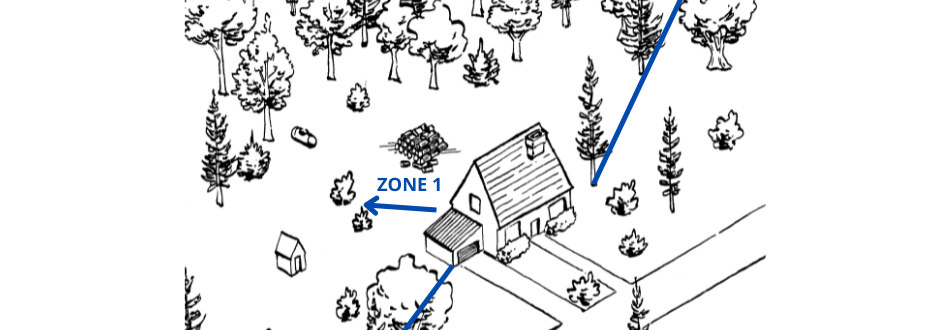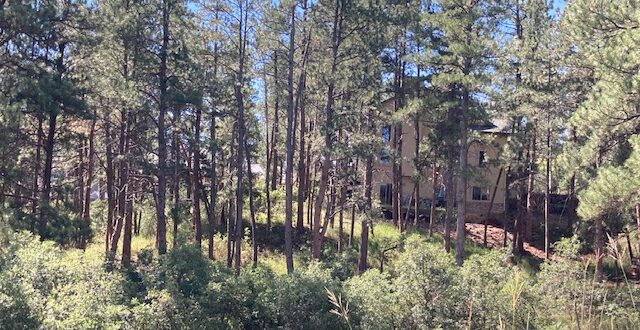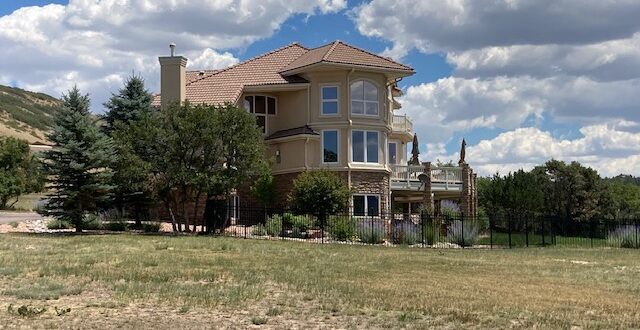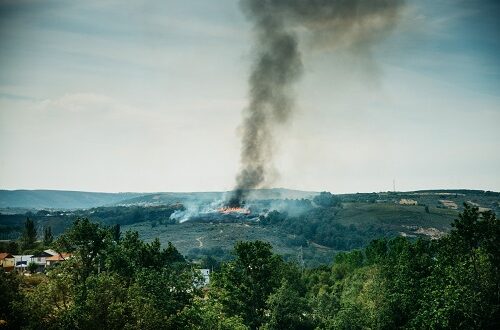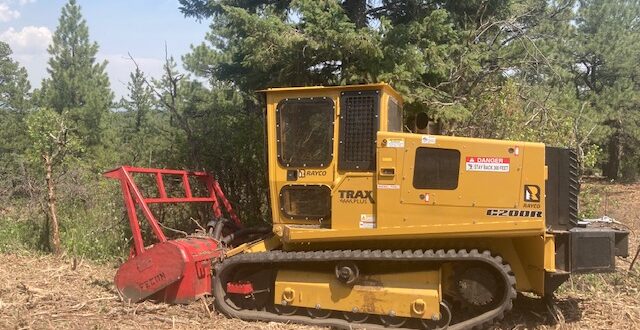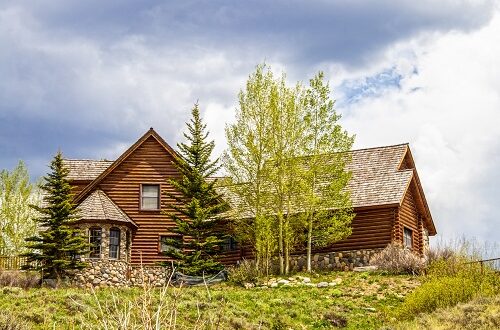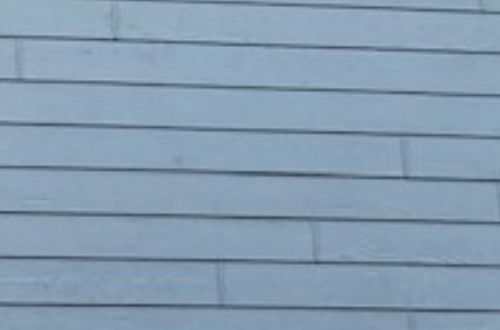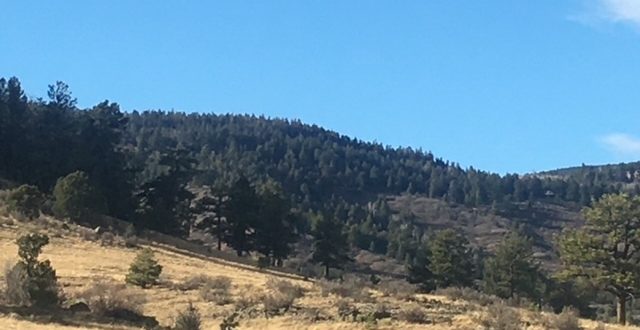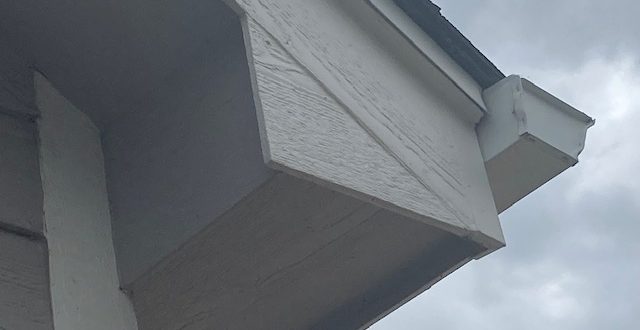For estimate on creating defensible space in El Paso county, contact us now. The best thing you can do to protect your home from wildfires is to create a defensible space. This is going to be in the first two zones on your property, covering up to 100ft or up to your property boundary line. Zone 1 is the most critical, but you will need to play close attention to Zone 2. Zone 1 is the first 30ft from your house. Zone 2 then covers up to your boundary line or 100ft, whichever comes first. However, Zone 1 is split into two, with Zone 1A being the first three to five feet of land from your decks, shed, or whatever
(719) 400-9104
office@coloradomastication.com
Tree thinning for forest management. (719)400-9104. Part of the forest management process is thinning out some of the forests. This usually happens in Zone 2 and beyond. However, if you have questionable trees in Zone 1, you’ll want to get rid of them, too. Getting the right trees for thinning is important. Some are going to be great for slowing down and preventing the spread of fires, while others are fuel for the wildfires. If you pick the wrong ones, you could put your home and the overall forest in more danger. Remove the Light-Starved Trees Look around the land at the way the trees look. If you find any that are scrawny and struggling to get to a light
Contact us for creating defensible space for your home in Colorado Springs, (719)400-9104. Creating a safety zone close to your home is important. Firefighters often need to pull back when there is a fire. They need to allow the front to pass, and then they will go in and douse the fires where they can. If you have a safety zone a long way away from your home, it’s going to take longer for firefighters to get to it. In fact, you may find that firefighters can’t save your home at all. Here’s what you can do to create a safety zone that’s useful. What Is a Safety Zone? A safety zone is a space for firefighters to pull back.
There is a lot that goes into creating defensible space around your home in Canon City. Managing certain elements of your home is essential, and the windows is a No. 3 priority. Windows are a necessary part of the home. They help to improve ventilation, while also allowing light into the property. You can’t board them up completely, but you can take steps to help minimize their ability to spread a fire around your home. How Windows Are a Problem in Wildfires Windows will break when there’s a fire. The glass is the most vulnerable element of the window, and really of the home when you consider how easy it is for it to break. Even tempered glass can break.
What is your fire prevention and mitigation plan? Call Colorado Mastication for fire mitigation plan at (719)400-9104. Not all wildfires will lead to complete destruction. However, you’ve seen on the news just how quickly these fires can get out of control. If you’re in a fire-prone area, you’ll be worried about the risks to your home. Research shows that there are ways to minimize the risks to your home in fire-prone areas. With the right materials, buffer zones, and maintenance, you can help increase the chances of your home surviving a wildfire. This isn’t a guarantee, but it is a chance to increase your chances of a home to go back to. Understand How Fires Spread The first thing you
There are a few elements in your Boulder home’s defensible space that are going to cause the biggest problems during wildfires. Vegetation is one of them. It doesn’t matter if it’s healthy or diseased or dead; the vegetation around your home is a fire risk. The good news is there are steps you can take to manage the vegetation. You can minimize the risk to your home. While you can’t completely stop all wildfires, you can at least take precautions to help reduce the spread and damage. What Type of Vegetation Is a Problem During Wildfires? All plants can burn when it comes to fire. However, some is going to be much more problematic than others. Diseased and dead vegetation
Evaluate your siding as part of defensible space at your property in Franktown. A siding is a great way to make your home standout. You can paint it bright colors if you want. It’s also a great way to add more insulation to your exterior walls to lock in the heat in the winter. However, it causes a risk in the summer months. When it comes to the wildfires, there is a chance that it will create the perfect opportunity for embers to spark. This is a No. 5 priority, though. There are much bigger issues to focus on first, such as your roof, your vents, and the vegetation around the home. How Sidings Can Cause Problems with Wildfires If
Consider topography when working on fire mitigation for your home in Black Forest. Topography is the way the land lays. It’s a major part when it comes to wildfires and is something you should look at when it comes to mitigating potential fires in the future. Fires will usually burn uphill faster than they do downhill. Heat rises, and that means the flames will heat the fuel uphill, allowing the fire to catch easier. Plus, there are often updrafts that help to spread fires faster. The Steepness of the Slope Affects Everything Steeper slopes make it much easier for the fires to spread up the hill. You’ll find they spread much faster, and this often means more of a danger
You need to consider about roofs when you are thinking about defensible space for your property in Colorado Springs. Your roof is one of the biggest problems when it comes to wildfires. It should be one of the top priorities when building and maintaining your home to protect it from the spread of wildfires. Sure, you can’t get rid of every single threat out there. What you can do is take precautions to help limit the chances of your home becoming a victim as a wildfire spreads through your community. That comes from the right materials in the right places. Why Roofs Are Problematic for Wildfires Your roof is a very large space that is usually flat. It’s actually the
There are many elements of the home to consider when it comes to managing the risk of wildfires and creating defensible space around your home in Parker. The eave is one element. It’s a No. 4 consideration, which means it’s not the biggest concern but you still want to pay close attention to it. Your eave will overhang the house to protect it from rain and sun. It will also trap heat in some cases, and this is where one of the big problems is when it comes to wildfires. Here’s a look at what eaves do, and how you can manage them to protect your home. How Eaves Can Draw in Wildfires The eaves will help to trap heat
